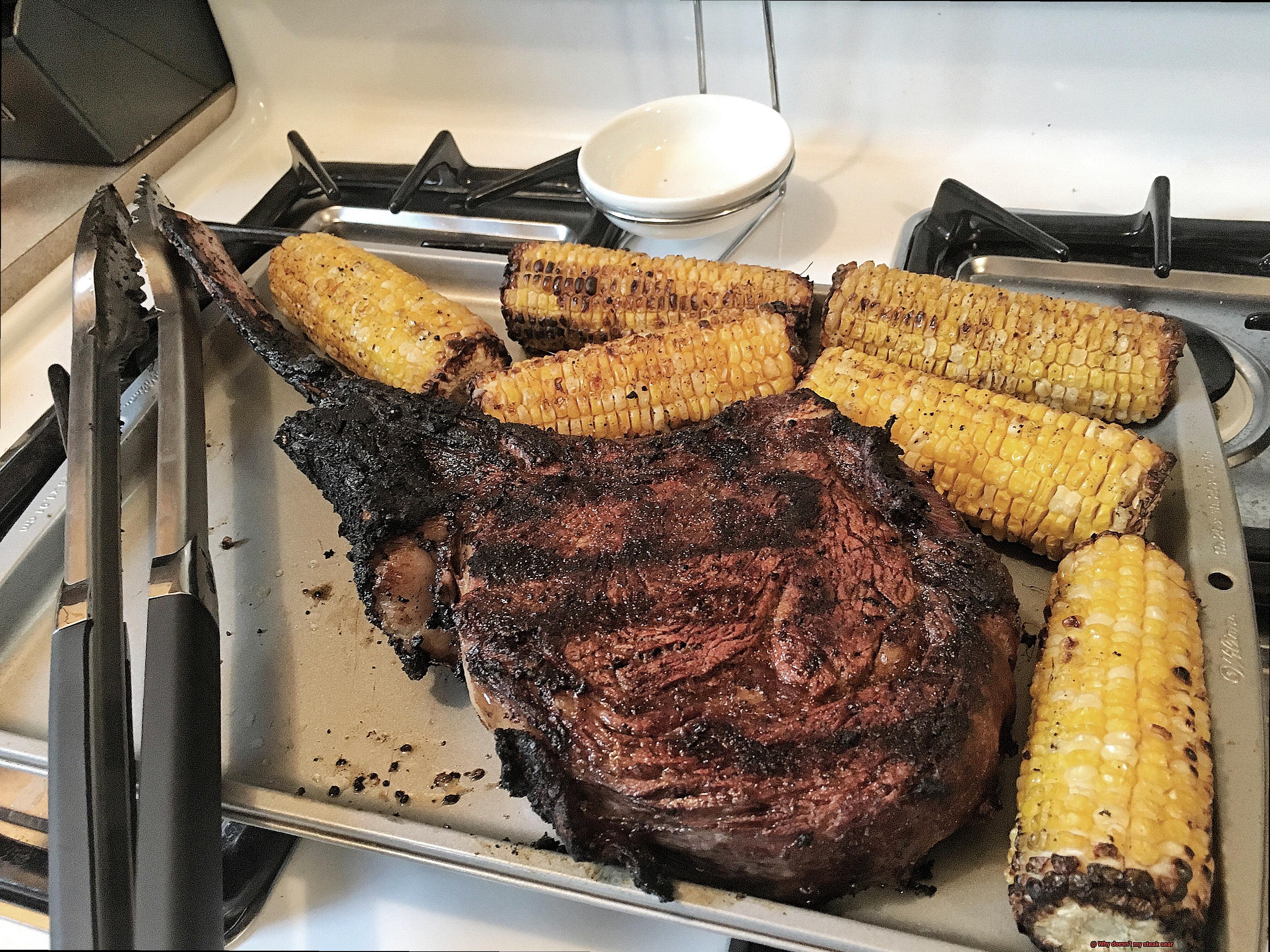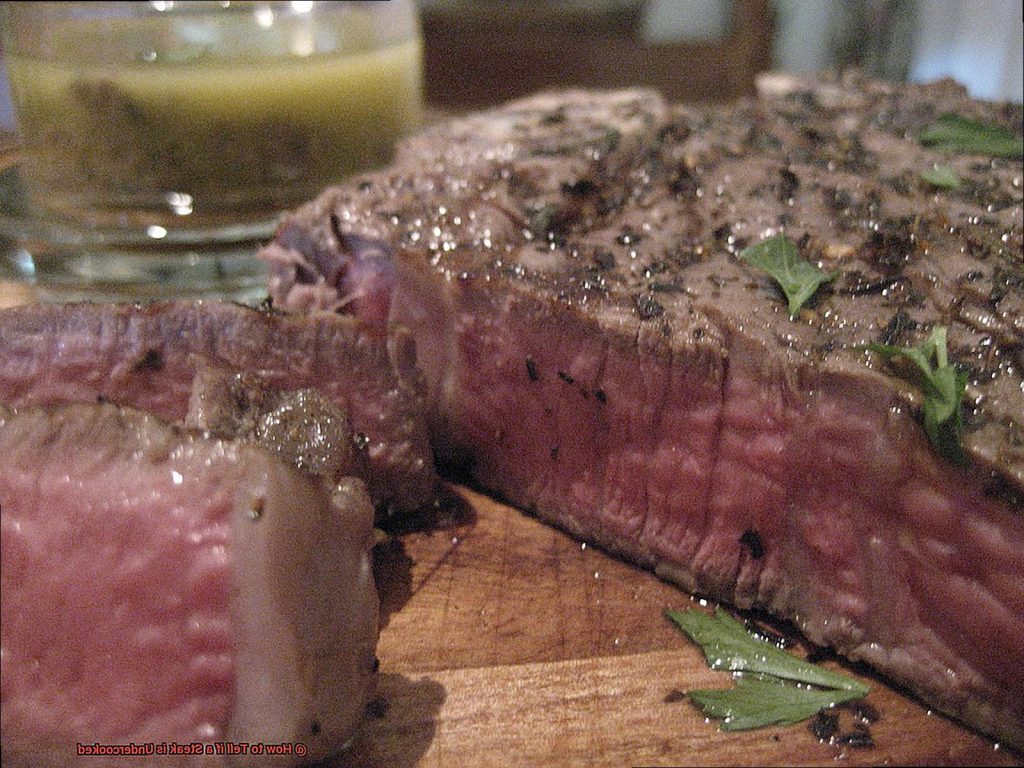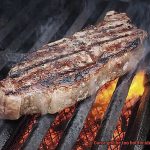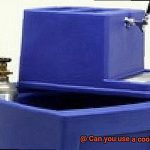Imagine this – you’ve got a juicy, succulent steak waiting to be cooked to perfection.
You’ve seasoned it just right and are ready to sear it up for that perfect golden-brown crust. But what if nothing happens?
What if your steak refuses to sear and ends up looking like a pale, unappetizing slab of meat? Well, fear not my fellow foodie.
You’re not alone in this culinary conundrum. Many home chefs struggle with getting their steaks to sear properly.
There could be several reasons why your steak won’t sear – from the type of meat you’re using to the pan you’re cooking it in, or even the humidity in the air around you. But don’t worry, because as an expert on all things steak sear, I’m here to help you troubleshoot and solve this problem once and for all.
So, let’s dive in now.
Contents
Excess Moisture on the Surface of the Steak
Just as a raincoat prevents water from penetrating your clothes, excess moisture on your steak will prevent high heat from forming a crust. So, the first step to avoiding this issue is to pat your steak dry with paper towels before cooking it.

This will remove any excess moisture on the surface of the meat, allowing for better heat penetration. Another essential tip is to let your steak come up to room temperature before cooking it.
Cold steaks release more moisture as they cook, leading to excess steam rather than a beautiful sear. By allowing your steak to warm up first, you’ll reduce the chances of excess moisture ruining your sear.
If you’re dealing with a particularly thick steak, consider salting it in advance. Salting your steak and letting it sit for an hour or two before cooking can help to draw out any excess moisture from the meat.
Be sure to pat it dry with paper towels before cooking it, though. Now, let’s talk about the importance of using the right pan.
For that perfect sear, a cast iron skillet or grill pan is ideal. Cast iron is excellent at retaining heat and can create a beautiful crust on your steak.
Plus, it’s versatile and can be used on both stovetops and in ovens. One final tip: avoid overcrowding your pan.
If there are too many steaks in the pan at once, they’ll lose too much moisture and create steam instead of searing. Cook them in batches if necessary, giving each enough space to cook evenly.
Not Getting the Pan Hot Enough
One of the most common mistakes is not getting the pan hot enough.
A sizzling pan is essential to create a perfect sear on your steak. To ensure that your pan is hot enough, preheat it for at least 5 minutes before adding any oil or meat.
But how do you know if your pan is hot enough? It’s easy – just sprinkle a few drops of water onto it.
If the water sizzles and evaporates immediately, the pan is ready for your steak. Choosing the right type of pan also plays an important role in achieving a perfect sear.
A heavy-bottomed skillet or cast-iron pan works best because it retains heat well and distributes it evenly. Non-stick pans tend to have a lower heat tolerance and may not get hot enough to create a proper sear.
Overcrowding the pan can also be an issue. When too many steaks are cooked in the same pan, they release moisture that can lower the temperature of the pan and prevent a proper sear from forming.
Cook steaks in batches, if necessary, to ensure that each one has enough room to sear properly. By following these simple tips, you can achieve a perfectly seared steak every time.
Your steak deserves a sizzling raincoat, i.e., a hot pan, to ensure it’s cooked to perfection.
Overcrowding in the Pan
Overcrowding in the pan is one of the biggest mistakes people make while cooking steak.
It can happen when you try to cook too many steaks at once or when you add other ingredients to the pan, like vegetables or potatoes. But fear not.
Here’s why overcrowding is an issue: When you add too many steaks to the pan, they release moisture and create steam. This steam has nowhere to go and ends up getting trapped in the pan.
The trapped steam prevents the steak from searing properly and can even cause it to steam instead of sear. It’s like trying to fit all your friends into a tiny car – it’s just not going to work.
To avoid this issue, it’s crucial to leave plenty of space between each steak in the pan. Think of it as giving each steak its own little slice of paradise.
This allows proper air circulation and prevents steam from building up.
If you need to cook multiple steaks, consider cooking them in batches or using a larger pan.
Use a cast iron skillet or grill pan instead of a non-stick pan. Cast iron retains heat better than other materials and is less likely to cool down when you add your steak to the pan.
It’s like wearing a cozy sweater on a chilly day – it keeps you warm and comfortable. In summary, overcrowding in the pan is a common mistake people make while cooking steak that can prevent it from searing properly.
Using a Nonstick Pan
While a nonstick pan may seem like the most convenient option, it may not be the best choice for searing your steak. But worry not, as an expert in the culinary arts, I’m here to guide you through the process of using a nonstick pan to achieve that mouth-watering sear you desire.
First things first, preheat your nonstick pan. This is crucial to ensure that it is as hot as possible before adding your steak.
We want that sizzle. So crank up the heat and let it sit for a few minutes until it’s nice and hot.
Once your pan is ready, add your steak, but make sure to leave enough space between each piece so they cook evenly. Now, the key here is patience.
Let your steak cook for a few minutes on each side before flipping it over. This will allow enough time to develop a crust and prevent it from sticking to the pan.
But wait, there’s more. Want to take your sear to the next level?
Consider adding some oil or butter to the pan before cooking your steak. This will not only prevent sticking but also create a more flavorful crust that will leave your taste buds dancing with joy.
While nonstick pans are great for preventing food from sticking, they don’t get as hot as other types of pans, which can make it difficult to achieve a proper sear on your steak. For better results, consider using a cast iron or stainless steel pan instead.
So, while using a nonstick pan may be convenient, it’s not always the best choice for searing your steak. But fear not.
Tips for Achieving the Perfect Sear
The key to achieving the perfect sear on your steak is a hot pan or grill. When the pan or grill is heated to high temperatures, the Maillard reaction takes place, which is the browning of proteins that creates a delicious crust on the steak. Without this reaction, your steak will not have that desired texture and flavor. So, make sure to preheat your pan or grill before adding the steak to achieve that perfect sear.
Proper Seasoning – The Key Ingredient
Seasoning is crucial for bringing out the natural flavors of your steak and elevating it to new heights. While salt and pepper are classic seasoning choices, don’t be afraid to experiment with other herbs and spices.
However, make sure not to over-season as this can draw moisture out of the steak and hinder the sear. Proper seasoning is the key ingredient that enhances your steak’s taste and improves its overall presentation.
Patting Your Steak Dry – A Crucial Step
Before cooking your steak, make sure to pat it dry with a paper towel. Moisture on the surface of the meat will create steam, preventing the sear from forming. This simple but crucial step can make a huge difference in achieving that perfect crust on your steak.
Patting your steak dry is an essential step in preparing it for its moment in the pan or on the grill.
Avoid Overcrowding Your Cooking Surface
When making multiple steaks at once, make sure not to overcrowd your cooking surface. If there are too many steaks in the pan or on the grill at once, they will release too much moisture and lower the temperature, preventing a proper sear from forming.
Each piece of meat needs enough space to breathe and cook evenly. Providing enough room for each steak to sear properly is the key to making them stand out and showcase their best attributes.
Subtopic 5: Let Your Steak Rest
After cooking your steak, it’s important to let it rest for a few minutes before slicing into it. This allows the juices to redistribute, resulting in a more tender and flavorful steak. Cutting into a steak too soon can result in a loss of moisture and a less desirable texture. Letting your steak rest is the final step in achieving the perfect sear, and it’s worth it when you taste the difference.
By following these tips, you can achieve the perfect sear on your steak every time.
A hot pan or grill, proper seasoning, patting your steak dry, avoiding overcrowding your cooking surface, and letting your steak rest are all essential steps in achieving that perfect crust and bringing out the best flavors in your steak.
Conclusion
In conclusion, searing a steak to perfection is an art that requires patience and attention to detail.
While it may seem daunting at first, achieving the perfect sear is certainly doable with the right techniques and equipment. There are several reasons why your steak may not be searing properly.
Excess moisture on the surface of the meat, inadequate preheating of your pan or grill, overcrowding in the cooking vessel, and incorrect seasoning can all contribute to lackluster results. However, by following some simple guidelines such as patting your steak dry before cooking it, preheating your pan or grill thoroughly, avoiding overcrowding in the cooking vessel, and allowing your steak to rest after cooking will help you achieve that perfect golden-brown crust.
To achieve a delicate crust on your steak, use a cast iron skillet or grill pan. Proper seasoning is also crucial in bringing out your steak’s natural flavors.






